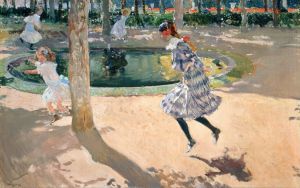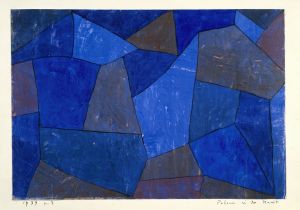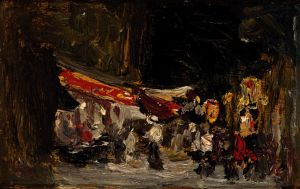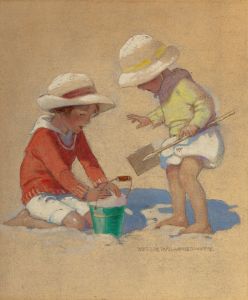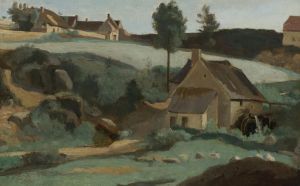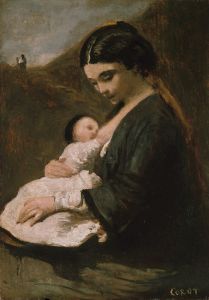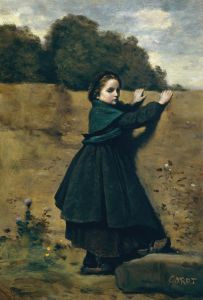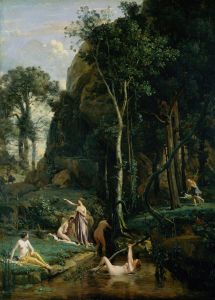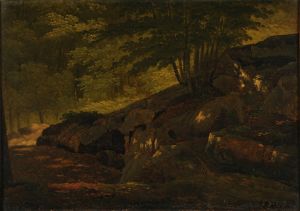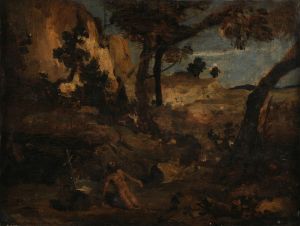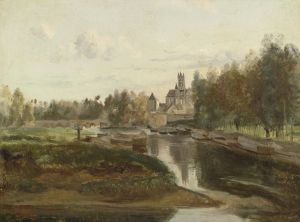
Beach near Etretat
A hand-painted replica of Jean-Baptiste-Camille Corot’s masterpiece Beach near Etretat, meticulously crafted by professional artists to capture the true essence of the original. Each piece is created with museum-quality canvas and rare mineral pigments, carefully painted by experienced artists with delicate brushstrokes and rich, layered colors to perfectly recreate the texture of the original artwork. Unlike machine-printed reproductions, this hand-painted version brings the painting to life, infused with the artist’s emotions and skill in every stroke. Whether for personal collection or home decoration, it instantly elevates the artistic atmosphere of any space.
Jean-Baptiste-Camille Corot, a pivotal figure in landscape painting, created "Beach near Etretat" during the 19th century, a period marked by significant shifts in artistic styles and approaches. Corot, born in Paris in 1796, is often associated with the Barbizon School, a movement that emphasized naturalism and was a precursor to Impressionism. His works are celebrated for their atmospheric qualities and the delicate interplay of light and shadow.
"Beach near Etretat" is one of Corot's many landscape paintings that capture the serene beauty of the French countryside. Etretat, located in the Normandy region of France, is renowned for its dramatic cliffs and coastal scenery, which have inspired numerous artists, including Claude Monet and Gustave Courbet. Corot's depiction of this locale reflects his mastery in rendering the subtle nuances of nature.
In this painting, Corot employs a muted color palette, a characteristic feature of his work, to convey the tranquil ambiance of the beach. The composition likely includes the iconic chalk cliffs of Etretat, which are a prominent feature of the region's landscape. Corot's brushwork is typically soft and fluid, creating a sense of harmony and balance within the scene. His ability to capture the ephemeral qualities of light and atmosphere is evident in the way he portrays the sky and sea, suggesting a particular time of day and weather condition.
Corot's approach to landscape painting was innovative for his time. He often worked en plein air, or outdoors, which allowed him to observe and depict nature with immediacy and authenticity. This method was relatively novel in the early 19th century and laid the groundwork for the Impressionists, who would further explore and expand upon these techniques.
"Beach near Etretat" exemplifies Corot's transition from the neoclassical style of his early career to a more naturalistic and expressive approach. His landscapes are not mere topographical representations but are imbued with a sense of mood and emotion. This emotional resonance is achieved through his careful attention to composition, light, and color, which together evoke a sense of peace and introspection.
Corot's influence on subsequent generations of artists cannot be overstated. His work bridged the gap between the classical traditions of the past and the emerging modernist movements. Artists such as Claude Monet and Camille Pissarro admired Corot's ability to capture the essence of a scene with simplicity and elegance. His legacy is evident in the way he inspired these artists to pursue their explorations of light and color.
"Beach near Etretat" remains a testament to Corot's skill as a landscape painter and his deep appreciation for the natural world. While specific details about the painting's creation and current location may not be widely documented, its significance lies in its representation of Corot's artistic vision and his contribution to the evolution of landscape painting. Through works like this, Corot continues to be celebrated as a master of capturing the serene beauty of the natural environment.






